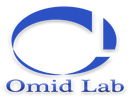- Who we are
About us

- About us
We care about your health.
Over the years, we have strived to enhance quality as much as possible by utilizing and selecting the best fully automated laboratory equipment from the world’s most renowned companies, imported from European and American countries. By using the exclusive kits produced by the manufacturers of each device, we have endeavored to earn the satisfaction of both physicians and patients.
- Our History
Omid Laboratory was established with the goal of providing advanced diagnostic services.
Omid Laboratory features numerous specialized departments including: Reception and Reporting, Sample Collection, Sample Processing, Referral Testing, Blood and Urine Biochemistry, Parasitology, Hormonal Assays, Hematology, Coagulation Studies, Immunology, Electrophoresis, Routine Microbiology and Tuberculosis Testing, Mycology, Virology, Toxicology and HPLC, Pathology and Cytology, Genetics, Molecular Diagnostics of Infectious Agents and COVID-19, HLA and Organ Transplantation, Flow Cytometry, as well as Administrative, Financial, Support Services and Quality Assurance departments.

?For check-up tests, should I fast
The complete check-up test requires 10 to 12 hours of fasting. It is preferable to perform your test in the early morning hours without any special physical activity.
?How much do the tests cost
Do I need to make an appointment for the test?
No, it's not mandatory. However, to facilitate scheduling and the sample collection process, as well as to optimize your valuable time, we recommend booking an appointment through the laboratory's online scheduling system before your visit.
DBS (Dried Blood Spot) Sampling Guide
This sampling method has gained attention due to its ease of transportation and lack of special requirements.
For infants, the proper sampling site is the lateral part of the foot sole, various capillaries, or standard venipuncture sites (Figure 1). We prepare the infant's sampling site by massaging or applying a warm towel, disinfect the area with alcohol and wait briefly for it to dry, then puncture the site with a lancet. The first drop of blood is wiped away with sterile gauze, and we allow a large blood drop to form. Gently touch the first circle on the paper (Figure 2) with the blood drop until the blood is absorbed and fills the entire circle. Repeat this process for several more circles until sampling is complete. If blood is drawn from a capillary or vein using a syringe, carefully place one drop of blood in the center of each circle on the paper until the circle is completely filled (Figure 3).
The blood collection papers should dry for about 2-3 hours in a dry place completely away from light.
• The sampled paper should be placed in a paper envelope and sent.
• Sample stability: 7 days at room temperature, 1 month refrigerated, 3 months frozen.
  |  |  |
|---|
Sampling Guide for IGRA Test (Interferon Gamma Release Assay)
- Fasting is NOT required for the IGRA test.
For sample collection, four special QFT tubes are used:
Nil tube (gray cap)
TB antigen tube 1 (green cap)
Mitogen tube 2 (purple cap)
TB antigen tube (yellow cap)
Collection methods:
For vacuum systems: Fill to black line (exactly 1 mL)
For syringe systems: Add blood to black line (exactly 1 mL)
Mix immediately by inverting 10 times
If QFT tubes unavailable:
Collect 5 mL lithium heparin blood
Store/transport at 22±5°C
Must transfer to QFT tubes within 16 hours
Incubation:
Incubate at 37°C for 16-24 hours
Centrifuge at 2000-3000 RCF for 15 minutes
Repeat at higher speed if plasma not separated
Storage:
Plasma stable for:
28 days at 2-8°C
3 months at -20°C
Label separated plasma tubes with original cap color
Protocol for Cytology Slide Preparation from Body Fluids
- Mix the collected fluid sample by inverting the container. For volumes <5 mL, add an equal volume of 70% ethanol and mix thoroughly. For volumes >5 mL, mix 2 mL sample with 2 mL 70% ethanol in a test tube and centrifuge (15 min at 3000 rpm for dilute fluids like urine/CSF; 10 min for viscous fluids).
Prepare ≥3 thin oval smears from the sediment. Air-dry at room temperature (no fixative required). Label each slide with patient name, date, and sample ID.
Prepared slides can be submitted together and remain stable at room temperature for ≥1 month.
If centrifugation is unavailable:
Add 70% ethanol as above
Refrigerate (2-8°C)
Process slides ASAP or ship refrigerated
Maximum storage:
CSF: 1 hr RT
Other fluids: 3 hrs RT or 24 hrs refrigerated
Ethanol-preserved: 48 hrs refrigerated
Guide for Preparing Cytology Slides from Body Fluids
- Gently mix the collected fluid sample by inverting or swirling the container. For samples less than 5 mL, add an equal volume of 70% ethanol and mix well. For samples greater than 5 mL, mix 2 mL of sample with 2 mL of 70% ethanol in a test tube and centrifuge (15 minutes at 3000 rpm for dilute fluids like urine or CSF; 10 minutes at same speed for viscous fluids).
Prepare at least 3 thin (oval-shaped) smears from the sediment and air-dry at room temperature (no fixative required). Label each slide with patient name, date, and sample number.
Prepared slides can be stored at room temperature for up to 1 month and may be submitted together.
If centrifugation is unavailable, add 70% ethanol as described, refrigerate (2-8°C), and process slides as soon as possible.
Maximum storage:
CSF: 1 hour room temp
Other fluids: 3 hours room temp or 24 hours refrigerated
Alcohol-preserved samples: 48 hours refrigerated
- Frequently Asked Questions
Frequently Asked Questions (FAQ)
Since accurate diagnosis of diseases and even correct reporting of test results require continuous collaboration and communication between the laboratory and the treating physician, we warmly shake hands with all respected doctors and spare no scientific or technical resources in this endeavor.
- به ما اعتماد کنید
دستاوردهای ما
ساختمان بیمارستانهای مدرن به گونهای طراحی شدهاند که زحمت پرسنل پزشکی و احتمال آلودگی را به حداقل رسانده و در عین حال کارایی کل سیستم را به حداکثر میرسانند؛ سازه این ساختمانها همچنین باید توان تحمل بخشهای سنگینی مانند اتاقهای رادیولوژی و عمل را داشته باشد.

